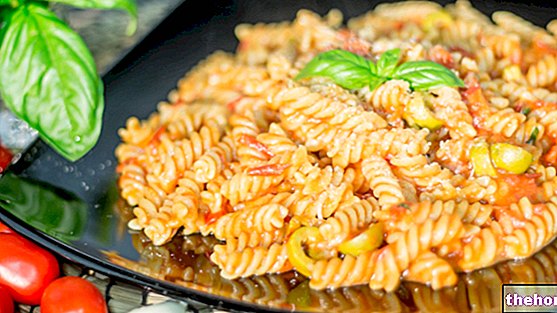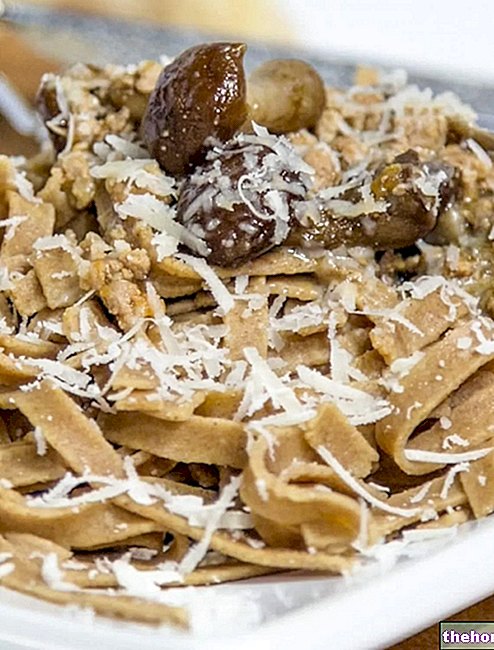Today I have in store an alternative and very modern recipe, vegan, gluten-free, dietary and very suitable for those suffering from diabetes. The main ingredient is represented by a flour rich in fiber, a source of glucomannan, a bizarre gum called konjac. Konjac flour, in contact with water, forms a dough that can be worked and forged to obtain shapes that recall the structure of rice or pasta. Today I propose you the Shirataki konjac noodles with peppers.
Video of the Recipe
Problems with playing the video? Reload the video from youtube.
Identity Card of the Recipe
- 47 KCal Calories per serving
-
Ingrediants
- 250 g of konjac rubber noodles
- 200 g of peppers
- 100 g of cherry tomatoes
- Q.b. of soy sauce
- 1 sprig of parsley
- 2 tablespoons of sunflower oil or corn oil
- 1 pinch of salt
Materials Needed
- Colander
- Cooking pan
- Chopping board
- Knives
Preparation
Did you know that
Konjac Shirataki noodles come in two forms: dried or preserved in water. In the first case, to rehydrate them, simply let them soak in hot water for 5 minutes, rinse them in cold water and flavor them to taste. For konjac Shirataki noodles preserved in water, a quick rinse and blanching in hot water is sufficient.- Clean the peppers: wash the vegetables in running water, removing the stalk, seeds and internal filaments. Cut the pepper into very thin slices.
- Pour two tablespoons of oil into the pan and brown the peppers for a few minutes, turning them often. Flavor with soy sauce and add pepper to taste.
- Cook for 5 minutes, or until the peppers have taken on a soft consistency.
- Open the package of konjac Shirataki noodles, rinse them in cold water.
- Bring a saucepan with lightly salted water to a boil and dip the spaghetti in. Heat them for a couple of minutes, then drain and toss in the pepper sauce.
- Serve the konjac Shirataki noodles with plenty of freshly chopped parsley.
Alice's comment - PersonalCooker
This dish is an example of how the Eastern tradition is increasingly united with ours: I find it fantastic to know the culinary traditions of other countries, integrating them into your own! The sauce that I have proposed is just an example, but of course you can design your favorite condiment: remember that the calories of the dish depend exclusively on the type of sauce you choose, precisely because the konjac gum provides very few calories (only 5 per 100 g) . But be careful: an exaggerated consumption of this dish can cause unpleasant phenomena such as flatulence, diarrhea and poor assimilation of proteins.
Try also the 5 Calorie Risino with Vegetables and the 5 Calorie Spaghetti with Prawns and Avocado!Nutritional values and Health Comment on the recipe
Konjac Shirataki are a first course with an almost irrelevant energy supply. The few calories they contain come from the lipids of the oil and the carbohydrates of the vegetables. Triglycerides are mainly composed of unsaturated fatty acids, carbohydrates are monosaccharide and proteins appear in traces. The fibers are very high and cholesterol is absent.
Konjac Shirataki are suitable for any diet, especially those of a clinical type aimed at slimming and / or fighting metabolic pathologies. They can also be included in the diet for gluten and lactose intolerances, as well as in that for vegans.
The middle portion is free, but beware of digestive problems of abdominal bloating and bloating resulting from the high fiber content.




























